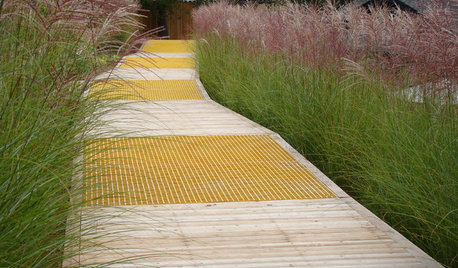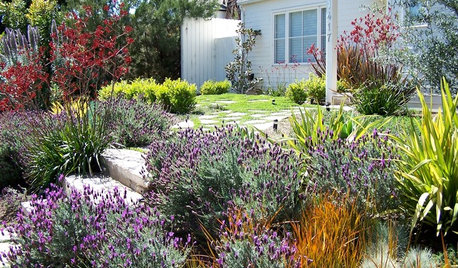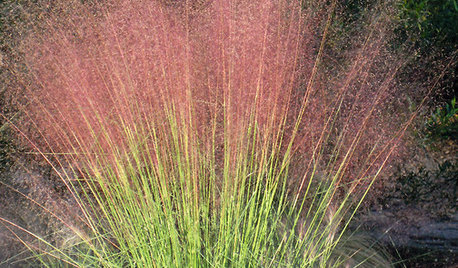Watering Grass
krnuttle
11 years ago
Related Stories

GARDENING GUIDESGreat Design Plant: Purple Needle Grass, California’s State Grass
The long-lived, drought-tolerant Stipa pulchra is as admired for its benefits as for its good looks
Full Story
GARDENING AND LANDSCAPINGOld School Green Design: Add Texture With Grass
Ornamental grasses capture the breeze and ripple like water in the landscape
Full Story
INSPIRING GARDENSInside Houzz: A Waterfront Property Ditches the Grass for a Garden
New drought-tolerant plantings and outdoor gathering spaces help this California backyard take in the view without wasting space or water
Full Story
GARDENING GUIDES10 Top California Native Plants, Trees and Grasses
Enjoy a fuss-free, water-wise garden in the Golden State by growing plants naturally in tune with the climate and wildlife
Full Story
LANDSCAPE DESIGNIs It Time to Consider Fake Grass?
With more realistic-looking options than ever, synthetic turf can be a boon. Find the benefits and an installation how-to here
Full Story
GRASSES10 Ways to Use Ornamental Grasses in the Landscape
These low-maintenance plants can add beauty, texture and privacy to any size garden
Full Story
SAVING WATERGreat Plants for Lush, Low-Water Gardens
Water restrictions making your garden look washed out? Give it living color with unthirsty grasses, flowers and succulents
Full Story
GARDENING GUIDESSmall Gem Lawns: More Impact From Less Grass
Instead of letting the lawn sprawl, make it a shapely design element in your yard. You’ll reap benefits both practical and aesthetic
Full Story
GARDENING GUIDES5 Great Grasses for a New Lawn
Learn about maintenance, wear tolerance, ideal climate and more for these top turf choices to pick the right one for you
Full Story
SUMMER GARDENINGGreat Design Plant: Pink Muhly Grass
Bring billowing clouds of pink to your yard with this heat-tolerant, sun-loving ornamental grass
Full StorySponsored
Central Ohio's Trusted Home Remodeler Specializing in Kitchens & Baths
More Discussions







tiemco
krnuttleOriginal Author
Related Professionals
Essex Landscape Architects & Landscape Designers · Ferndale Landscape Architects & Landscape Designers · Simi Valley Landscape Architects & Landscape Designers · Waunakee Landscape Architects & Landscape Designers · Surprise Landscape Contractors · Chattanooga Landscape Contractors · Columbine Landscape Contractors · Hawaii Landscape Contractors · Holland Landscape Contractors · Tinton Falls Landscape Contractors · Silver Firs Landscape Contractors · Harvey Swimming Pool Builders · Redlands Swimming Pool Builders · Sunny Isles Beach Swimming Pool Builders · Randolph Swimming Pool Builderstiemco
ZoysiaSod
ZoysiaSod
goren
texas_weed
tiemco
grass1950
ZoysiaSod
ibanez540r
grass1950
nearandwest
krnuttleOriginal Author
nearandwest
jdo053103